
The Sudama cave is one of the oldest surviving rock-cut caves in India. It was dedicated by Emperor Ashoka in 257 BC. Its granite walls are highly polished.
This photograph was taken by Anandajoti.
April 3, 2019
The end of a very bad day in Pompeii, 79 AD. This fellow was probably asphyxiated by the volcano's red-hot hurricane-force winds, full of ash, before the door of a building fell on him. But this was nothing compared to the very bad day 66 million years ago....
An asteroid slammed into the Gulf of Mexico, creating a tsunami that washed up to North Dakota... which was closer to the shore back then. The fish below died on that day. They were recently found with tektites — little rocks made of molten quartz — in their gills.
For more on these newly found fossils, read this:
And here's what the Chicxulub crater might have looked like shortly after that asteroid hit the Yucat&actute;n Peninsula in Mexico:
Beautiful, isn't it? Destruction can lead to beauty.
Click on the picture to read a New York Times article on this.
April 7, 2019
Yesterday Lisa and I went to the UCR
Botanic Gardens, which was having its spring members-only sale. We
bought a lot of succulents and other plants. Today we planted them.
My favorites — the strangest — are the red 'soap aloe',
Aloe saponaria, now officially called Aloe maculata:

and a claw-like 'Cape aloe', Aloe ferox:

We also got two paddle plants, Kalanchoe thyrsiflora, and a pig's ear, Cotyledon orbiculata.
April 10, 2019
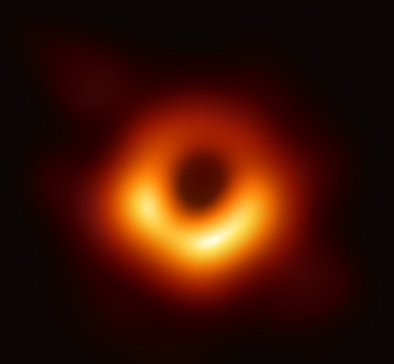
Here's the black hole at the center of the galaxy M87, now photographed for the first time by a network of telescopes spread across the whole Earth! This black hole is 53 million light years away, but it's 6.5 billion times the mass of the Sun, and it's 38 billion kilometers across!
Backing off, here's an older picture taken in X-rays by the Chandra X-ray observatory:
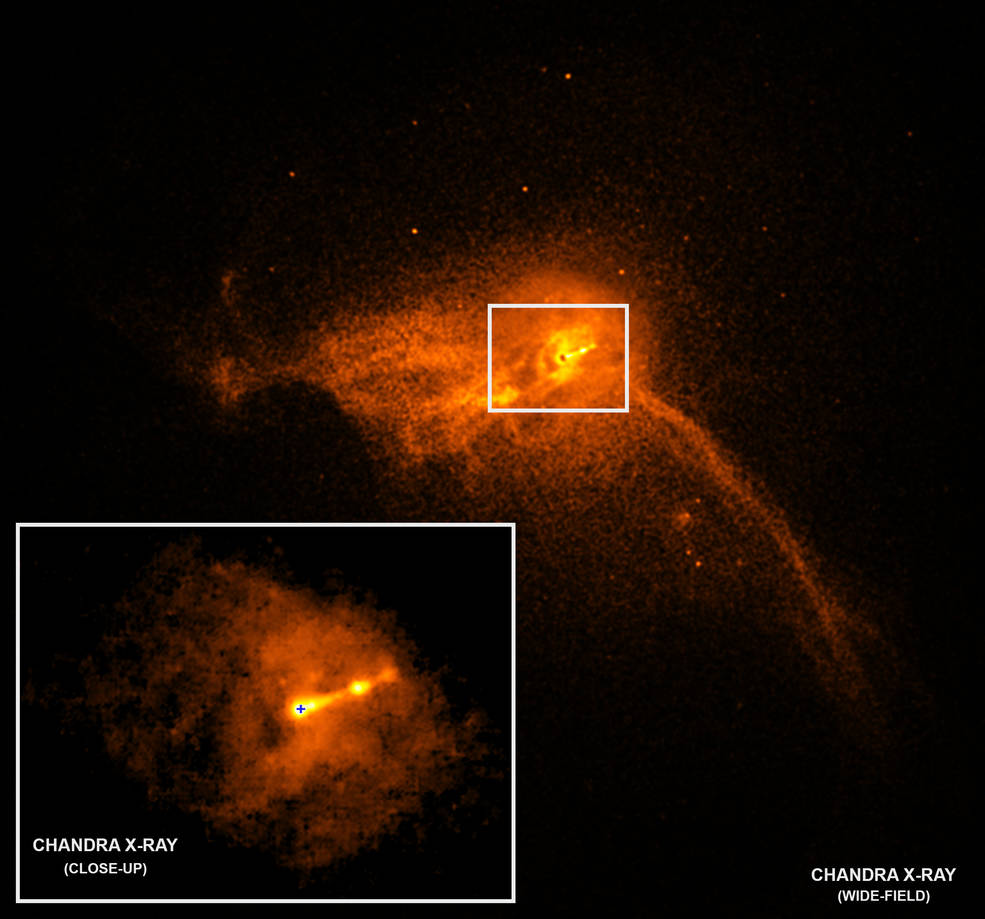
A rotating disk of ionized gas surrounds this black hole. It's about 0.4 light years across, and moving at about 1000 kilometers/second. About 90 Earth masses of gas fall into this disk every day! A beam of energetic particles is shooting out of it, toward us:
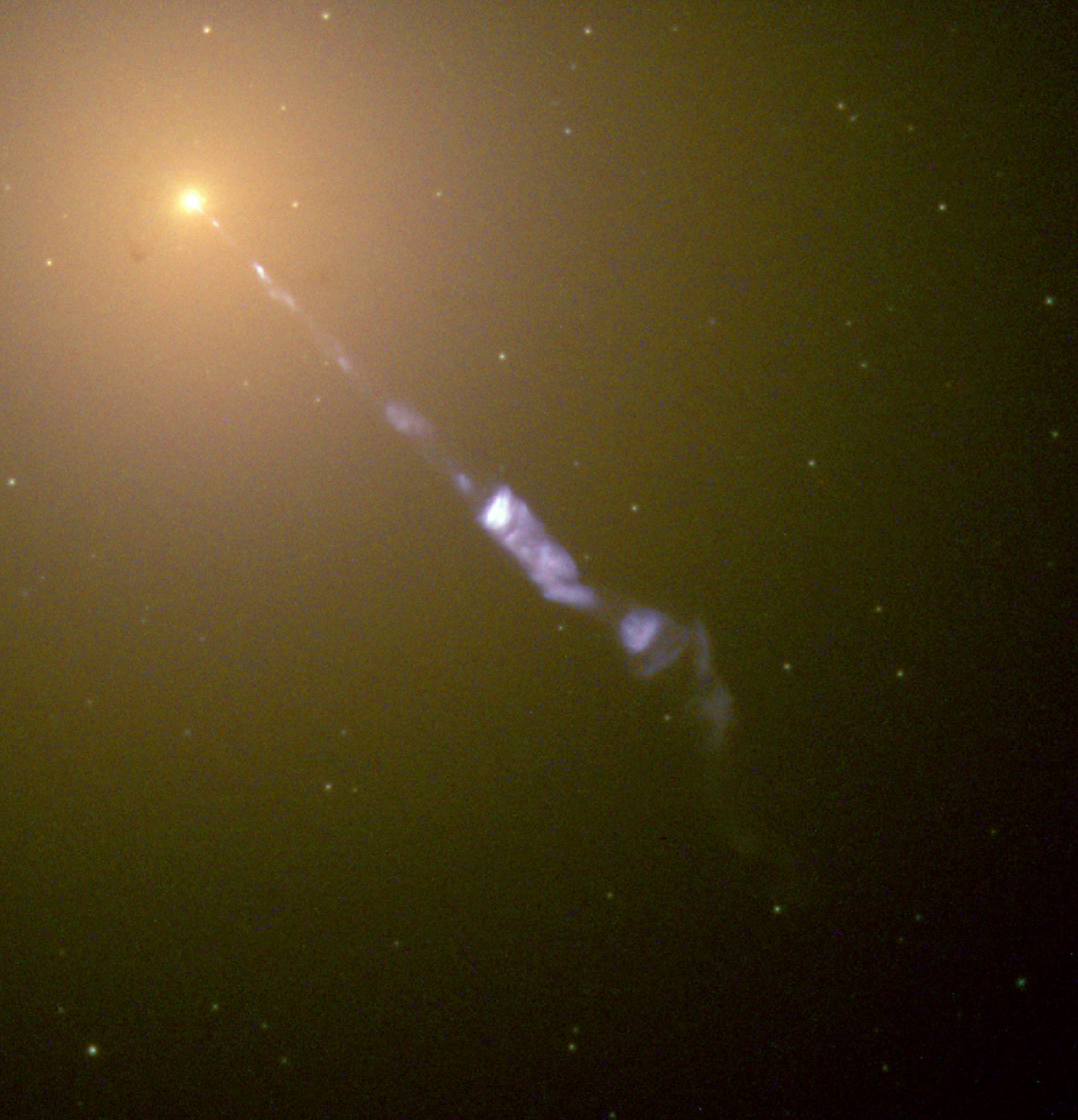
And backing off a lot more, here is the core of the galaxy M87 photographed in infrared light (white) and visible light (blue). You can see the jet of hot gas shooting from the black hole at the center of the galaxy! It's about 5000 light years long.
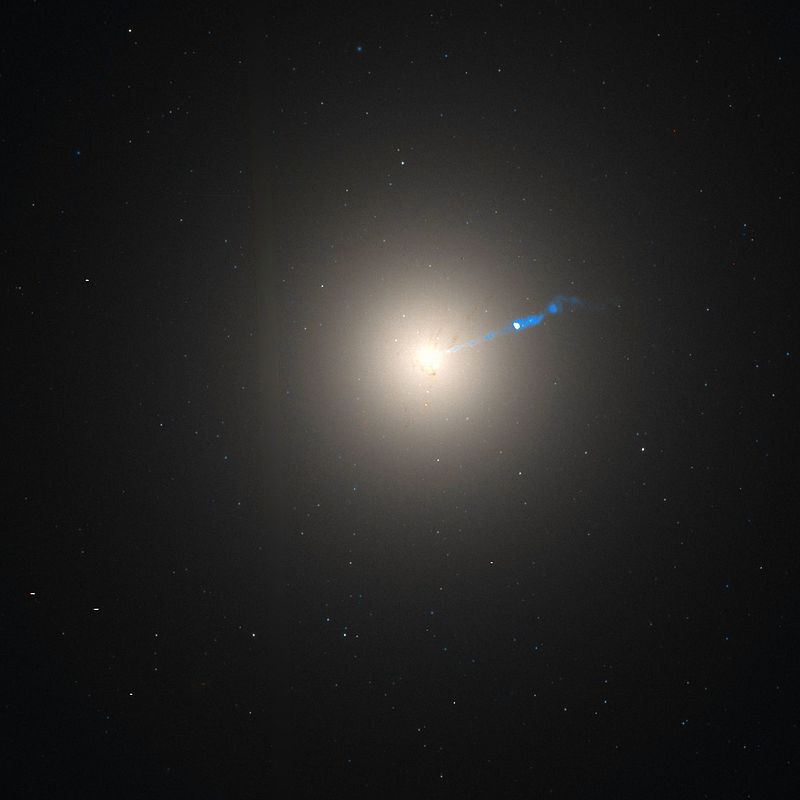
Nobody knows what happens to matter after it falls into a black hole.
April 13, 2019

The pirate warlord who first wielded this sword was 7 feet tall, and so strong he could bend coins with his hands. Named Grutte Pier, he started a guerilla war in 1515 after the Black Band burned his village down, and raped and killed his wife.
Grutte Pier was from Frisia — what's now the coast of Netherlands. His original name was Pier Gerlofs Donia; "Grutte Pier" simply means "Big Pier". Here's a statue of him in his home town:

Photograph by Nijeholt.
While he had a sense of humor, he became almost as bad as the men he was fighting. His pirate band, the Black Hope, burned down the city of Medemblik in Frisia — and killed most of its inhabitants. He's a fascinating case, though:
A tower of a fellow as strong as an ox, of dark complexion, broad shouldered, with a long black beard and moustache. A natural rough humorist, who through unfortunate circumstances was recast into an awful brute. Out of personal revenge for the bloody injustice that befell him (in 1515) with the killing of kinsfolk and destruction of his property he became a freedom fighter of legendary standing.
My chapter is here:
New Spaces in Mathematics will explain lots of cool new mathematical concepts of space: diffeological spaces, synthetic geometry, topoi and infinity-topoi, infinity-groupoids, stacks, and derived geometry.

New Space in Physics will explain new concepts of space as applied to physics, including twistors, stringy geometry, derived and higher symplectic geometry, and noncommutative geometry, topos theory in quantum physics, and supergeometry. (My own paper just poses some problems.)

April 20, 2019
High school algebra holds some deep puzzles. Tarski asked: are there identities for +, times, exponentiation and the number 1 that you can't get by playing around with the 11 rules you used in high school?
And the answer is yes!

People worked on Tarski's problem for decades, and eventually someone found an identity that you can't get merely by manipulating Tarski's 11 high school identities!

His proof is here:
The problem is that Tarski's rules don't include subtraction.In 1990, Gurevic showed no finite set of axioms in first-order logic using only addition, multiplication, exponentiation and 1 can prove all the identities involving these operations that hold for the positive natural numbers!
To me what's interesting is that all Tarski's 'high school identities' follow from the definition of a 'bicartesian closed category'. This is a category with finite products, finite coproducts and exponentials. For example: the category of finite sets!
Richard Garner showed the number of morphisms from 1 to 1+1 in a bicartesian closed category can be any power of 2, but not any other finite number! Check it out:

You're living in a bubble.
It's 300 light years across. It was punched out by a supernova about 15 million years ago. The gas in this bubble is one-tenth as dense as the gas outside, and it's X-ray hot.
It's called the Local Bubble. But you live in the Local Fluff.
Zooming out, we see this is just one of many such bubbles:
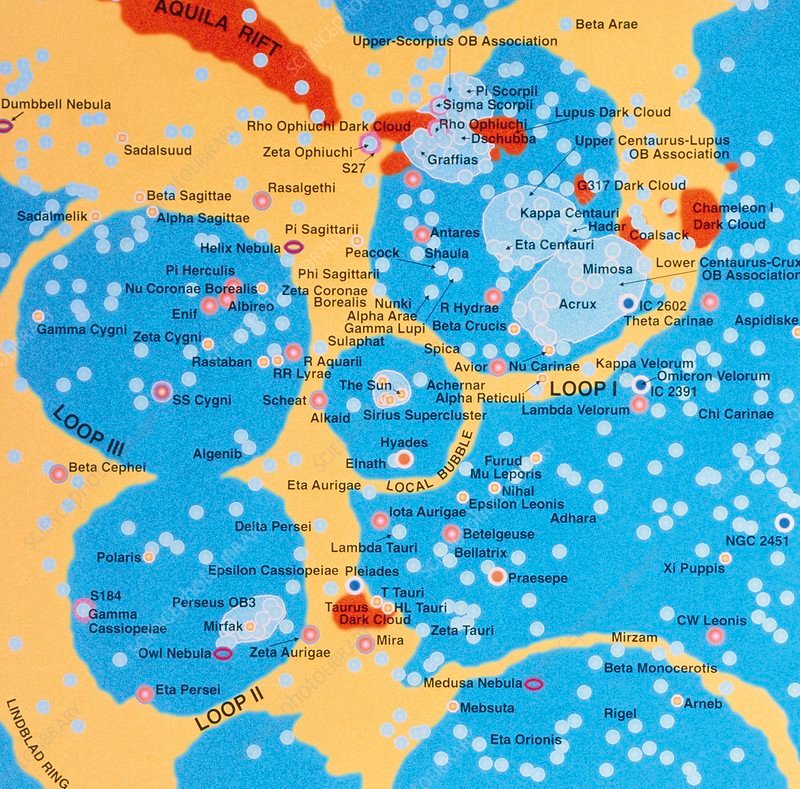

Ozone or 'trioxygen' is O3, an unstable and highly reactive form of oxygen.
Oxozone or 'tetraoxygen' is a hypothetical molecule, O4. Its existence was first predicted in 1924 by Gilbert Lewis, who was trying to explain the anomalous magnetic properties of liquid oxygen.
Liquid oxygen is blue and paramagnetic — its spins line up with a magnetic field, though not nearly as much as ferromagnets like iron. Strangely it becomes more magnetic, per weight, when diluted by mixing it with liquid nitrogen!
Gilbert guessed liquid oxygen forms O4 when not diluted.
Chemists now think liquid oxygen doesn't have stable O4 molecules. Instead, O2 molecules tend to form short-lived pairs with antiparallel spins when they bump into each other — so, liquid oxygen becomes less magnetic when it's denser!
Calculations have predicted two possible forms of oxozone, both unstable: a pinwheel and a ring:


Sulfur, down one notch in the periodic table, also forms a ring-shaped S4. But it seems liquid oxygen contains neither of these! Instead, just paired O2 molecules.
Solid sulfur also forms ring-shaped S8 molecules called octasulfur: this is its most common form.

Solid oxygen also forms ring-shaped O8 molecules, but only under extreme pressure. And it's not yellow — it's red!
It's called ε oxygen or 'red oxygen'.
I want some for my birthday.
April 24, 2019
They just found a very long-lived unstable isotope! First, some background.

In 2003, bismuth-209 was discovered to undergo radioactive decay with a half-life of 19 quintillion years. This is the most common isotope of bismuth, and the only one thought to be stable, so this came as a surprise: it means all bismuth isotopes are unstable! It's the element after lead and before polonium in the periodic table, and we thought it was the heaviest stable element. Now that honor seems to belong to lead, whose most common isotope, lead-208, is a doubly magic.
The new discovery happened in a funny way: a search for dark matter.

At the XENON1T experiment, they are using 3.5 tons of liquid xenon to look for collisions with hypothetical dark matter particles, which would make little sparks of light.
But whoops - they discovered that xenon-124 is radioactive!
They estimate xenon-124, a rare light isotope of this element, has a half-life of 18 sextillion years.
Some are saying this marks the discovery of the longest-lived unstable isotope known:
Wikipedia disagrees: it says tellurium-128 has a half-life of 2.2 septillion years. Zounds! That's over a hundred trillion times the age of the Universe!
It's more reasonable to use scientific notation; I just enjoy an opportunity to use numbers like 'septillion', since it doesn't happen every day. So:
The universe is still just a bawling infant.